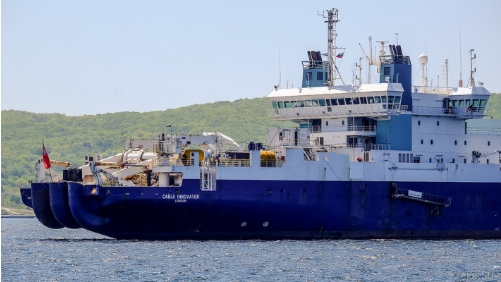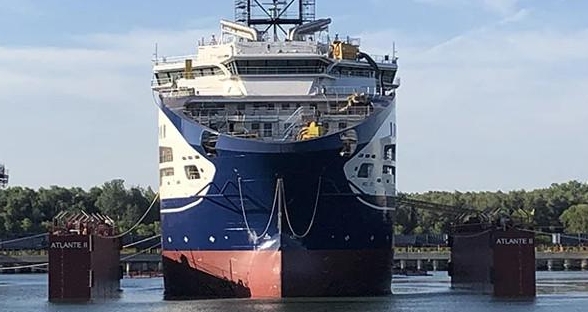This is a new Prysmian asset that will add to the strength of the existing Prysmian submarine cable vessel laying fleet, enabling it to work more efficiently in green energy system development projects around the world.

This is a new Prysmian asset that will add to the strength of the existing Prysmian submarine cable vessel laying fleet, enabling it to work more efficiently in green energy system development projects around the world.
The new vessel’s first task is to lay the Viking Link submarine cable between the UK and Denmark, the world’s longest high-voltage direct current subsea power connection.
Later this year, the vessel will be used in projects such as the underwater link between the Spanish islands of Lanzarote and Fuerteventura and the French offshore wind farm in Saint-Nazaire.
The submarine cable laying vessel is about 170m long and 34 m wide and is capable of deep water operations at depths of over 3000 m.
It is specially designed to use only marine diesel oil with a sulfur content below 0.1%, complies with the latest requirements of IMO 2020 (sulfur content <0.5%) and ECA (sulfur content <0.1%), and can sail without geographical restrictions.
In addition, the vessel is equipped with over 80% more powerful lighting and low-consumption LED lights, so reducing generator emissions.

Thanks to next-generation cable technology, the vessel is armored with lighter materials.
The maximum speed is just over 16 knots; with 7,000-ton and 10,000-ton turntables, ensuring the highest turntable capacity on the market, reducing travel from factory to site.
The overall increase in project efficiency with two independent laying lines for increased operational flexibility.
And a bollard pull of over 180 tons with the ability to perform complex installation operations and support a variety of laying tools.
At the same time, the ship is equipped with a state-of-the-art DP3 positioning and seakeeping system.
All cable handling and installation equipment are designed by Prysmian.
The reduction in required transit time results in an overall reduction in CO2 emissions and fuel consumption of around 40% compared to conventional cable laying vessels.